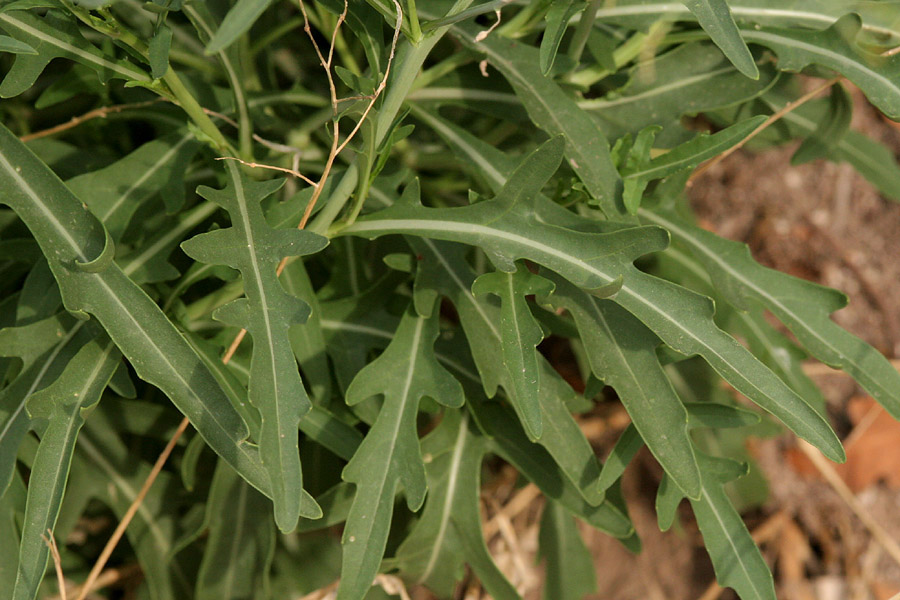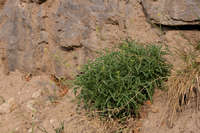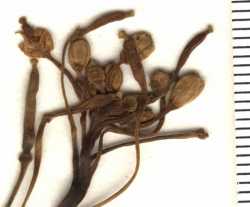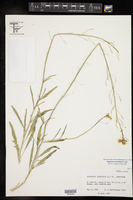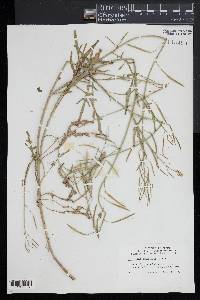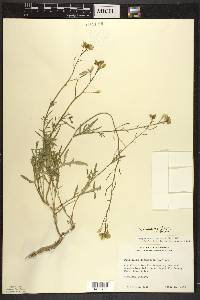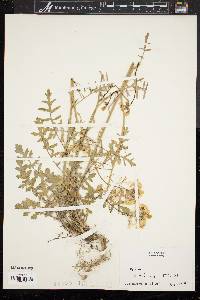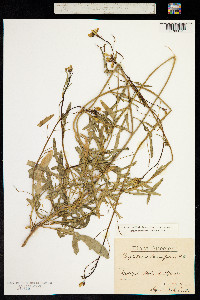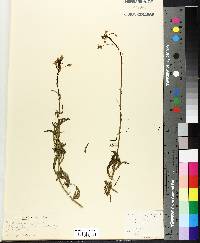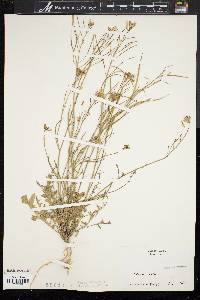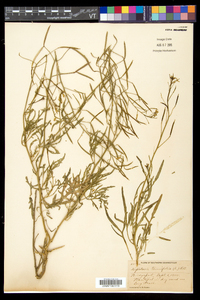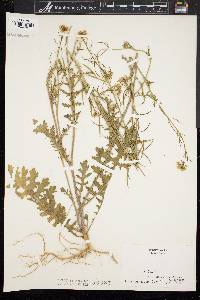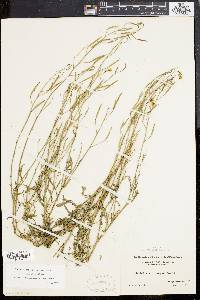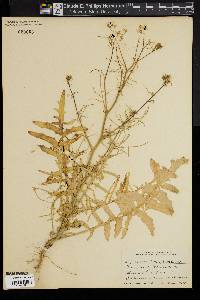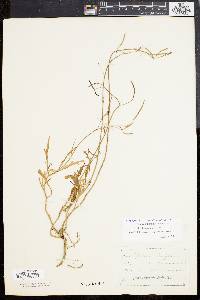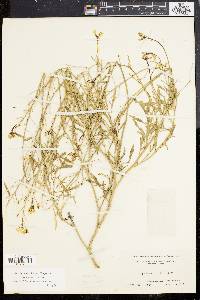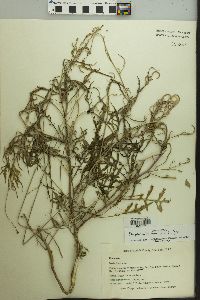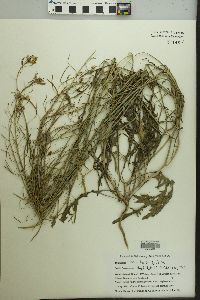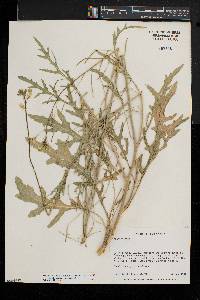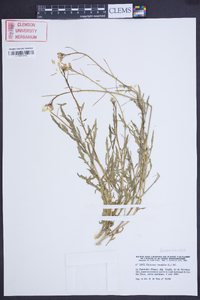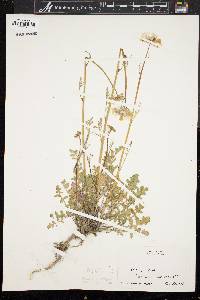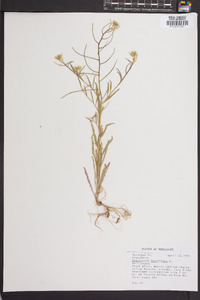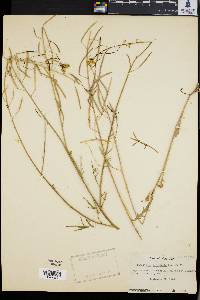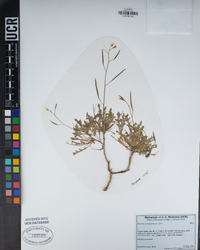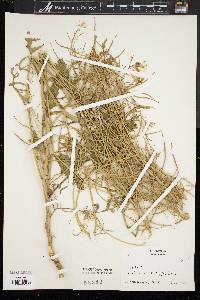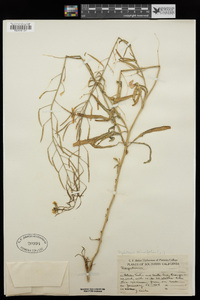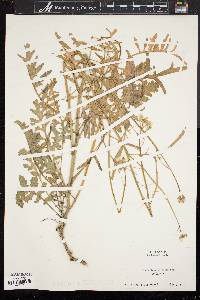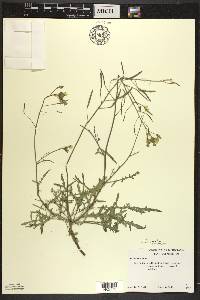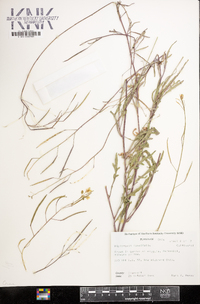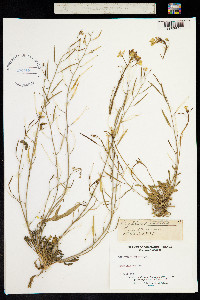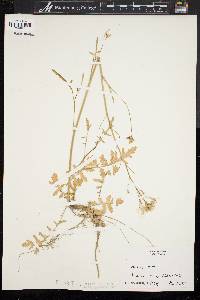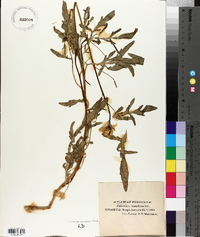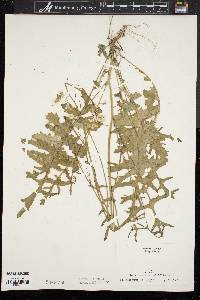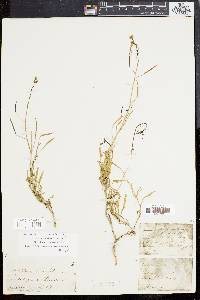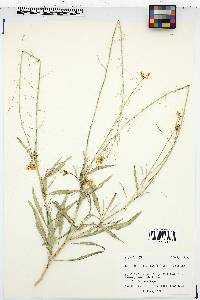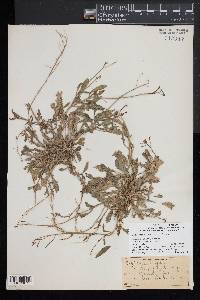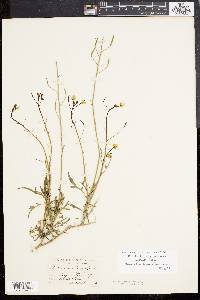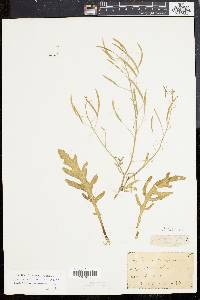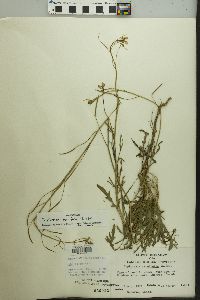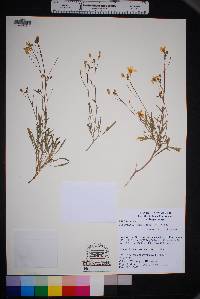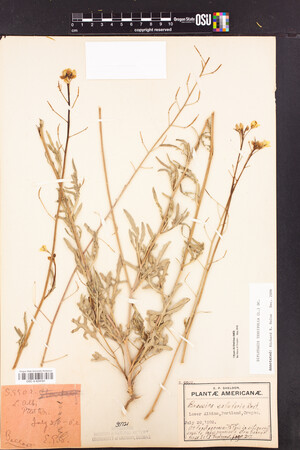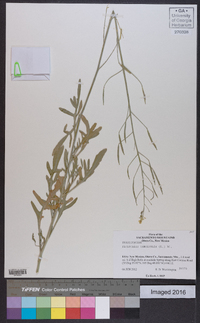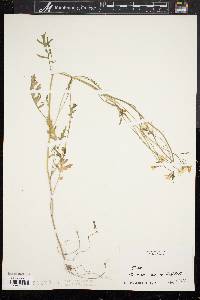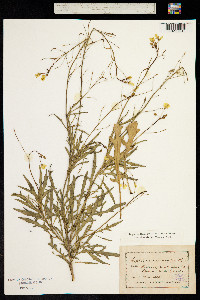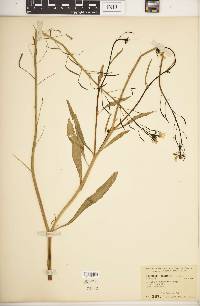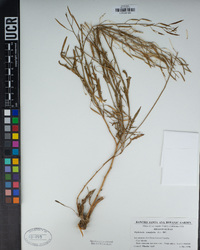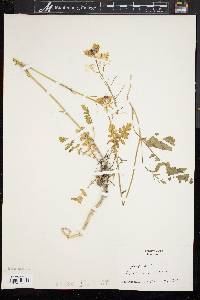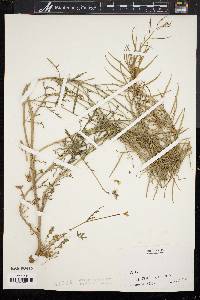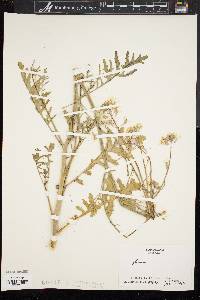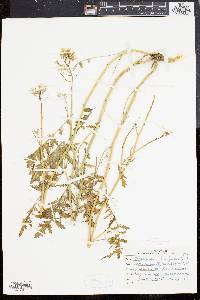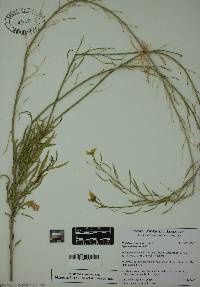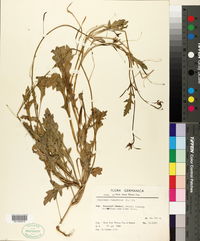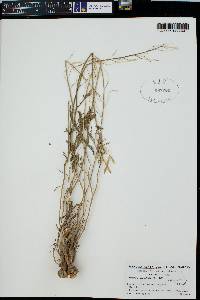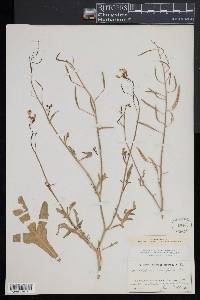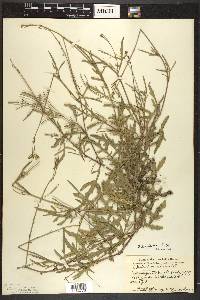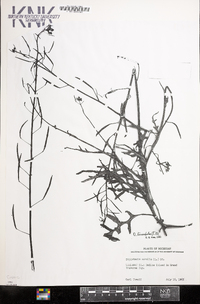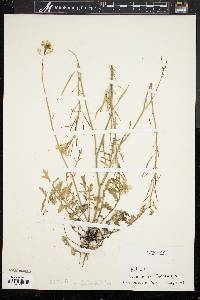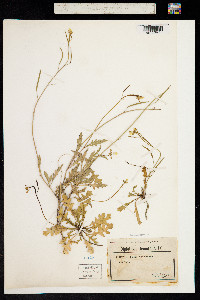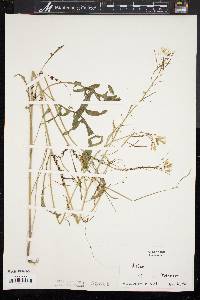
|
|
|
|
Family: Brassicaceae
Perennial Wallrocket
[Brassica tenuifolia, moreSisymbrium tenuifolium L.] |
Perennials, (usually suffrutes-cent, roots with shoots from adventitious buds), strongly scented (with glucosinolates), (glaucescent). Stems erect, 2-7(-10) dm, glabrescent or sparsely pubescent basally. Basal leaves: blade elliptic to obovate, 2-15 cm × 10-60(-80) mm, margins sinuate to deeply pinnatifid, (2-5 lobes each side). Cauline leaves petiolate; similar to basal, (distal cauline shortly petiolate, blade similar, with narrower segments), surfaces usually glabrescent. Fruiting pedicels 8-35 mm. Flowers: sepals 4-6 mm, glabrous or pubescent, trichomes straight; petals yellow, 7-11(-13) × 5-8 mm, (apex rounded); filaments 4-8 mm; anthers 2.5-3 mm; gynophore 0.5-3 mm. Fruits usually erect, rarely ascending, (somewhat torulose, slightly compressed), 2-5 cm × 1.5-2.5 mm; terminal segment (stout), beaklike, 1.5-3 mm, seedless; (ovules 20-32(-46) per ovary). Seeds 1-1.3 × 0.6-0.9 mm. 2n = 22. Flowering spring-fall. Waste places, disturbed areas, wharf and railroad ballast, sandy beaches, muddy shores, wet woods, mountain slopes; 0-2100 m; introduced; N.S., Ont., Que.; Ariz., Calif., Conn., Fla., Ga., Ind., Maine, Mass., Mich., Mo., N.J., N.Mex., N.Y., Ohio, Oreg., Pa., Tex.; Eurasia; Africa; introduced also in South America (Argentina), Australia. Diplotaxis tenuifolia was introduced from Europe as a ballast plant in the last century. It may have failed to persist in some of the recorded provinces and states.
Perennial herb 30 cm - 0.8 m tall Stem: upright, hairless or nearly so. Leaves: below the middle of the stem, pinnately divided to toothed, reverse lance-shaped to narrowly oblong, somewhat fleshy with a waxy coating (glaucous). The leaves have an unpleasant smell when crushed. Flowers: yellow. Sepals 5 - 8 mm long. Petals four, over 1 cm long. Stamens six. Fruit: a long, narrow pod, on a stipe (a type of supporting stalk), ascending, 2 - 5 cm long, each of the two sides with a prominent midvein. Seeds in two rows in each chamber. Similar species: Diplotaxis muralis is similar but has leaves mainly at or near the base, longer sepals (2.5 - 5 mm), and fruit which is not on a stipe. Flowering: late May to late September Habitat and ecology: Introduced from Europe. Rare in the Chicago Region. Has been found along railroad tracks in ballast and on the weedy embankment of a highway. Look for it in waste ground. Occurence in the Chicago region: non-native Etymology: Diplotaxis comes from the Greek word diploos, meaning double, and taxis, meaning row, which refers to the double row of seeds in the pod. Tenuifolia means "of walls." Author: The Morton Arboretum Glabrous or subglabrous, taprooted perennial (but sometimes blooming the first year), erect, 3-8 dm; lvs mostly cauline but below the middle of the stem, somewhat fleshy and glaucous, foetid when crushed, oblanceolate to narrowly oblong, toothed to more often deeply pinnatifid; lower pedicels becoming remote and 2-3 cm; pet yellow; frs ascending, 2-5 cm, the base of the valves elevated 1-2 mm above the scars of the perianth; 2n=22. Native of Europe, established as a weed in waste places here and there in our range, especially northward, and in w. U.S. May-Sept. Gleason, Henry A. & Cronquist, Arthur J. 1991. Manual of vascular plants of northeastern United States and adjacent Canada. lxxv + 910 pp. ©The New York Botanical Garden. All rights reserved. Used by permission. |
This project was made possible in part by the Institute of Museum and Library Services [MG-70-19-0057-19].
Powered by Symbiota

